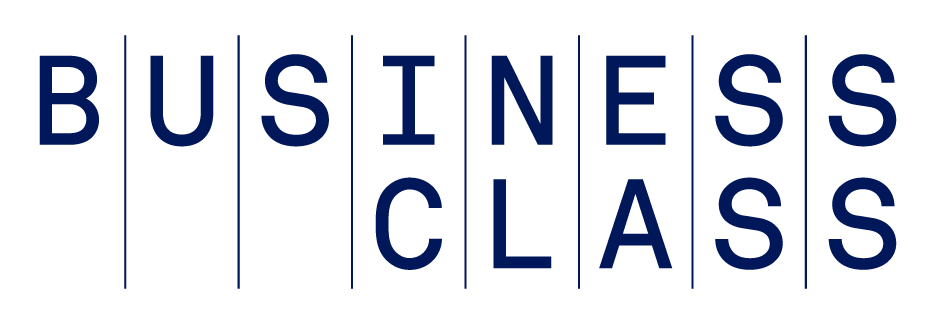The heads of every product-heavy company on the planet can easily spout off about the joys—and headaches—related to supply chain management. While the topic may seem a little dry, mastering it is at the very core of the success of most businesses. Effective supply chains are delicate ecosystems—working properly, everyone is happy. But when there's even one kink in the chain, the whole ecosystem can feel like it's collapsing.
Supply chain management involves how products are made, where manufacturing happens, quality control surrounding products, and how (and in what condition) the goods are eventually delivered to customers. It is a logistical maze for most companies—a maze many entrepreneurs learn to navigate as they go, hitting roadblocks along their way to success.
Daniel Scott is the perfect example of an entrepreneur who knew very little about supply chain management when starting his business. After working as a management consultant in New York City, he decided to move to Vietnam to be a teacher. While there, he happened upon a friend who worked in the garment industry. Scott had long wanted to create an affordable leather briefcase after not being able to find a good option during his consulting days, and he soon found himself launching a direct-to-consumer briefcase company called Daniel's with the help of a factory in Vietnam and, through a connection, a leather tannery in Brazil.
After ordering his first product test batch, he moved back to New York City to officially launch his business. Things were going well, his bags were selling and his supply chain seemed buttoned up…that is until his factory contact told him her lease was going to be up in a few months and she'd have to move locations.
“She told me this a year in advance and painted it as a non-event, like she would find a new location and continue as normal," Scott remembers.
Get to know your primary partners—your suppliers and manufacturers—like you were dating. Look at a few vendors and make sure you can build a good relationship from the beginning.
—Sara Kitlowski, president and COO, Omeza
But as the months ticked on, nothing happened and Scott started to get nervous. When wanting to put in a new purchase order with the factory, his contact told him she couldn't handle it. He realized at that point that he needed a different option.
Scott decided to do some internet research to find out the names of the factories and tanneries used by his favorite leather brands. He learned that a good concentration of them were in León, Mexico.
“I emailed a tannery I down there and asked for five factories they'd recommend, then booked a flight and went down there to check them all out in a single day," he says.
Within a few weeks, he'd found a factory and a tannery in León that could handle his product demands. “It involved a ton of headaches and sleepless nights, but now I have the suppliers I need," he says.
Nearly 1,200 miles south of Scott's New York City office, Sara Kitlowski sits at her desk in Sarasota, Florida. As president and COO of Omeza, a company that creates a collection of Omega-3 oil products to help people with wounds that won't heal, Kitlowski knew it was going to be difficult to find supply chain partners to formulate, manufacture and package Omeza's products, but she wasn't sure exactly how difficult.
“Each of our products requires a very special packaging to maintain oxygen barriers—absolutely no oxygen can touch the product at any time during the manufacturing process—and the formulation is complex," she says. “The reason for this is because our products are made of fish oil, and while they will be still be effective if air touches them, if a customer uses them and they've previously touched oxygen, they will end up smelling like a Seattle dock."
Early on, the Omeza team found a few companies to partner with, but nine months in, Kitlowski and her team hit a major roadblock—two of her supply chain partners no longer wanted to work with fish oil, and had issues with the prohibition around oxygen touching the product.
This was a deal breaker for the company (“It was incredibly stressful," says Kitlowski), and in summer 2017, a little more than a year before the first product was to release, the company shifted strategy and started looking for a local-to-Sarasota supply chain partner that could handle not only formulation, but also packaging. With a little searching, the company found a contract manufacturer that was willing to do almost everything in the same place. Today, Omeza has office space in that manufacturer's warehouse.
“We've hit the manufacturing lottery," she says.
Over in Atlanta, Beatrice Feliu-Espada founded The Honey Pot Company, a plant-based feminine care business that sells natural pads, wipes and washes online, back in 2012, formulating products at her table. After selling out of an initial batch at an industry conference, she landed several large retail clients.
While still working a full-time job, Feliu-Espada raised money on the side to fund orders from retailers. It wasn't easy.
“My first million-dollar raise was the hardest thing I've ever done," she says. “I had manufacturers who weren't giving me Net 30 terms. The pressure to raise and pay bills was incredible.
"In the end we found the money and confirmed to their terms. Moving past the first few orders, we got better terms, which helped a ton."
Fast forward several years and Feliu-Espada is working full-time for The Honey Pot, planning to move the business to New York City later this year, and has built out her team and gotten her supply chain under control. Her products are so popular that the orders keep coming. “This year I need to raise $10 million," she says. “That is a learning experience; I definitely should have raised more than $1 million for starters. We anticipated the products would do well on shelves, we just didn't know how well."
Supply Chain Lessons
Entrepreneurs worried about finding supply chain solutions are smart to heed to a few pieces of advice:
1. Be careful with your early hiring.
“If you plan to go into retail, make one of our first hires a supply chain management person or a consultant that has that as a specific skill set," recommends Feliu-Espada.
2. Date before marrying.
“Get to know your primary partners—your suppliers and manufactures—like you were dating," suggests Kitlowski. “Look at a few vendors and make sure you can build a good relationship from the beginning."
3. Find a factory you can trust.
“It is really easy to find, just use Google," says Scott. “The major brands—the brands you admire—likely have the name of the factory they use on their website. Call them up and see if they will work with you. If you're worried about MOQs [minimum order quantities], talk about how much you are planning to grow in the future. Oftentimes telling them the story of your business and your growth potential will go along way in them agreeing to work with you, even if you have small batches at first."
Photo: Getty Images



